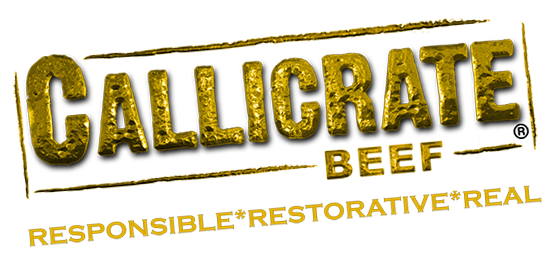Great steaks achieve sumptuous texture and taste
“Literally melting in your mouth, accompanied by wonderful waves of sweet beef and butter flavor” and “wonderfully buttery and silky.” That’s the poetic language of David Rosengarten, author of The Rosengarten Report, describing the sumptuously decadent beef that results from a rare breed of Japanese cattle called Wagyu. It is sometimes mistakenly referred to by the term, Kobe beef.
“Wagyu beef is the highest quality meat in the world,” adds Jerry Reeves, an animal scientist at Washington State University. “Only about two percent of all U.S. beef today is graded prime, which is the highest grade. With Wagyu, 90 percent of it is prime or greater.”
Those same rare genetics known for out-of-this-world beef quality and tenderness have been incorporated into the beef production program that supplies Ranch Foods Direct Natural Meat Market in Colorado Springs. The result is a line of premium beef that takes tenderness and juiciness to exorbitant new levels.
“This is a landmark event in the beef industry,” says Ranch Foods Direct owner and rancher Mike Callicrate. “Our goal has been to create the highest quality beef ever experienced. The Wagyu-Black Angus genetics combined with the Callicrate Beef production practices will set a whole new standard of excellence.”
What makes Japanese Wagyu cattle exceptional is the unusually high level of marbling, or intramuscular fat, in their fat deposition profile. Wagyu cattle produce less outer-body fat around the outside of the muscle cuts but deposit more of it within the muscular fibers. The outer fat, usually trimmed, has less nutritional benefit.
“Marbling is where the flavor and juiciness comes from. What a customer really enjoys about the eating quality of a steak is that burst of flavor that comes out of the intramuscular fat,” Callicrate explains.
Interior marbling is what makes for the best steaks. That fat — usually tiny tendrils, rather than long, gristly strips — bastes a steak from its interior during cooking to ensure juiciness and the satisfyingly familiar taste and texture of top beef.
The trademarked Ranch Foods Direct and Callicrate management protocol is already geared to producing the most tender, most consistent natural beef on the market by eliminating the use of growth implants and sub-therapeutic antibiotics, processing cattle at a young age before muscle and connective tissues becomes tough (roughly 12 to 14 months), achieving complete blood removal at processing and allowing the time necessary for proper aging. “Wet-aging” gives meat a mellower flavor.
“Tenderness is more important than any other factor when it comes to culinary satisfaction,” Callicrate says. “Tenderness is what the consumer really focuses on and what they are impressed by. So if we can get the same high level of tenderness we’ve already developed a reputation for, plus the heightened flavor that comes with Wagyu marbling, we should have something to really celebrate.”
Red meat and fat have been unfairly demonized by some nutritionists. Processed foods, high fructose corn syrup, monounsaturated vegetable oils, MSG and other products of modern industrialization are more likely the culprit in pervasive health problems rather than animal protein or fats, he says. “Marbling aids in digestion,” he says. “We’ve been led to believe that low-fat diets are a good thing, when in fact the opposite has always been true: fat is very necessary in the diet, and the intramuscular fat in beef — particularly our beef, because of the diet our cattle are on — is very beneficial and very good for you.”
Cattle raised for Ranch Foods Direct are fed a natural supplement called linoleic acid, which boosts the highly nutritious conjugated linoleic acid, or CLA, in the fat.
“You need a balance of saturated fats, along with unsaturated fats,” Callicrate continues. “You need your Omega 6s and your Omega 3s. Fat is critical to the diet and critical in aiding digestion. With Callicrate beef, people often say that they feel very good after the meal, or that it sets well in their stomachs. In other words, it’s easy to digest. Older people who have almost quit eating commodity beef have commented on how wonderful our meat is.”
Plans are to feature the new beef line on the Callicrate-Wagyu website and at specific Ranch Foods Direct-supplied restaurants. Callicrate’s “extreme beef” will be aged two to three weeks.
“It will bring a premium,” he says.
In Japan, Wagyu genetics account for a third of the beef consumed, at prices as high as $200 per pound.
The Japanese refer to meat from Wagyu-bred cattle as Kobe beef, a term sometimes used in the U.S. for similar top-of-the-line products. Technically, however, Kobe beef only comes from animals born and raised in a traditional manner near the city of Kobe, expressing a tie to a certain geography, much as real Parmigiano-Reggiano cheese only comes from a particular locality in Italy.
U.S. importation of real Kobe beef has been banned since 2001.
“It isn’t really Kobe beef here in the U.S. for the same reason you can’t get Vidalia onions from California,” Callicrate says.
The base gene tics for Callicrate’s American version were imported from Japan by Gerry Pittenger, of Ellensburg, Wash., a rancher with one of the oldest and largest herds of Wagyu cattle in the U.S. “Of all the beef I’ve eaten over the 33 years I’ve ranched, I’ve never eaten better beef than Wagyu,” Pittenger says. “It has tremendous merit.”
tics for Callicrate’s American version were imported from Japan by Gerry Pittenger, of Ellensburg, Wash., a rancher with one of the oldest and largest herds of Wagyu cattle in the U.S. “Of all the beef I’ve eaten over the 33 years I’ve ranched, I’ve never eaten better beef than Wagyu,” Pittenger says. “It has tremendous merit.”






